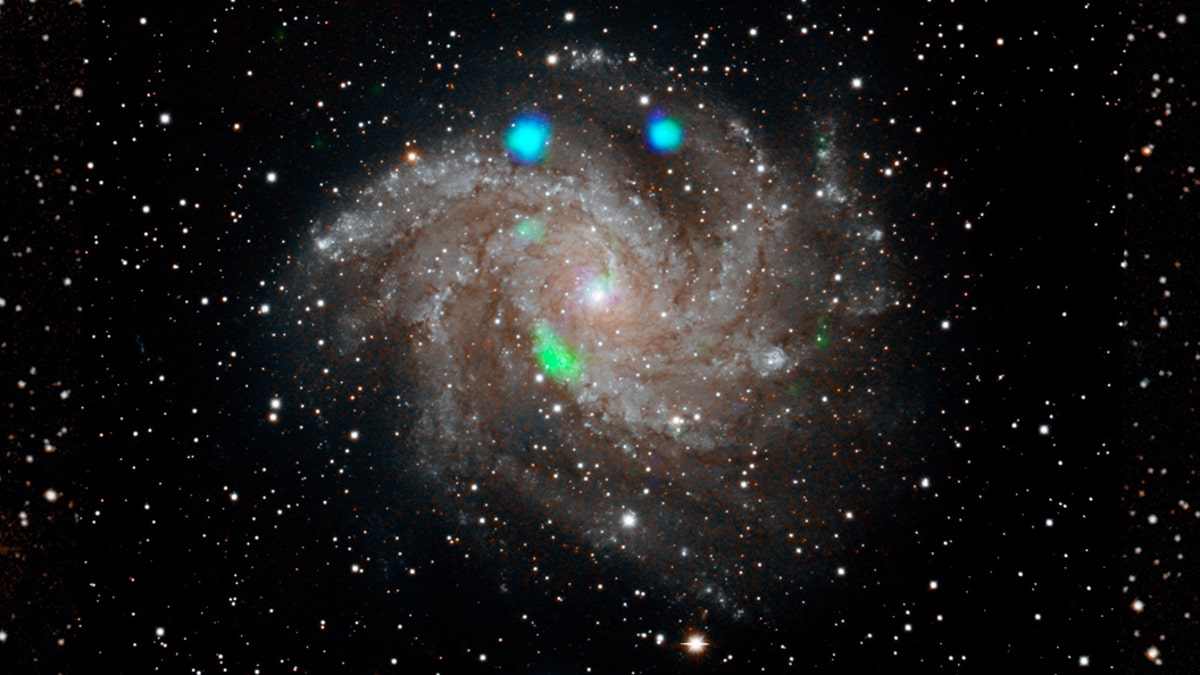
This visible-light image of the Fireworks galaxy (NGC 6946) comes from the Digital Sky Survey, and is overlaid with data from NASA's NuSTAR observatory (in blue and green). Credit: NASA/JPL-Caltech
The cosmic web responsible for 'gluing' the far-flung galaxies of the universe together has been directly observed for the first time ever.
Scientists using the European Southern Observatory’s Very Large Telescope were able to spot an ancient cluster of galaxies 12 billion light-years away that are linked together by a network of gas filaments.
The cosmic web theory is central to current explanations of how the universe formed after the Big Bang.
However, until this observation, there had only been indirect evidence to suggest it existed.
Prof Michele Fumagalli, an astrophysicist at Durham University and co-author of the work, said: “It is very exciting to clearly see for the first time multiple and extended filaments in the early universe.
"We finally have a way to map these structures directly and to understand in detail their role in regulating the formation of supermassive black holes and galaxies.”
The research team were able to directly detect the web by using intensive equipment designed to pick up the faintest of structures.
Galaxy clusters are known for being the most tightly gravitationally-bound structures in the universe.
They can contain hundreds of thousands of galaxies.
It has been predicted that 60% of the hydrogen created during the Big Bang can be seen as long filaments strung out across space in the cosmic web.
By mapping out some of the light emitted by hydrogen within a galaxy cluster called SSA22, the team were able to identify individual filaments of gas that make up a web-like structure between galaxies.
Erika Hamden, an astrophysicist at the University of Arizona said: "These observations of the faintest, largest structures in the universe are a key to understanding how our universe evolved through time, how galaxies grow and mature, and how the changing environments around galaxies created what we see around us."
It is thought that the cosmic web is the scaffolding of the cosmos and provides the framework for galaxies to form and evolve.
The latest observations support this theory by revealing supermassive black holes, starbursting galaxies and lots of active stars all at the intersections between the filaments.
First author of the research Hideki Umehata said: "This suggests very strongly that gas falling along the filaments under the force of gravity triggers the formation of starbursting galaxies and supermassive black holes, giving the universe the structure that we see today."
The cosmic web has been observed before but only as short blobs of gas beyond galaxies.
Umehata noted: "Now we have been able to clearly show that these filaments are extremely long, going even beyond the edge of the field that we viewed.
"This adds credence to the idea that these filaments are actually powering the intense activity that we see within the galaxies inside the filaments."
The findings have been published in the journal Science.
This story originally appeared in The Sun.




















